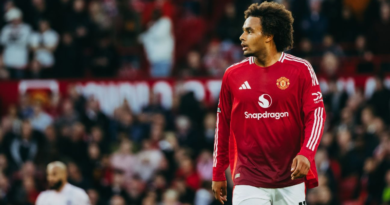'It's only up from here': How the Atlanta Dream rebuilt a broken WNBA franchise
When they joined the Atlanta Dream in October 2021, coach Tanisha Wright and general manager Dan Padover took stock of their new WNBA team. It didn’t take long.
Atlanta had just three players under contract — one of whom had missed two-thirds of the 2021 season under suspension — and a 2022 first-round draft pick. The Dream had gone a combined 23-65 from 2019 to 2021 and had a contentious separation from one of its former owners.
The mission for the new ownership group, front office and coaches was nothing short of an overhaul. But how do you fix a broken franchise? It starts from the top.
“Our league deserves owners who are just as passionate about this as we are,” said Wright, who played in the WNBA for 14 seasons before becoming a coach. “I think that’s exactly the type of ownership group that we have now: They’re excited not only for the Atlanta Dream, but for the growth of the WNBA as a whole.”
The Dream finished 2022 at 14-22 and just out of the playoffs, and No. 1 draft pick Rhyne Howard was WNBA Rookie of the Year. In the offseason, Atlanta had a handful of headlining acquisitions, including Allisha Gray, the 2017 rookie of the year. And entering the 2023 season — which opens for the Dream on May 20 (1 p.m. ET, ABC) at the Dallas Wings — there’s an energetic feeling of potential.
“We know how hard we can work and what we can accomplish,” Howard said. “It’s only up from here. It’s gonna be a good journey.”
The vibe is much different than the summer of 2020, when the Dream organization seemed in crisis as the players’ relationship with then-Atlanta ownership became fractured beyond repair.
Real estate investor Larry Gottesdiener knew this when he bought the Dream in February 2021 with an ownership trio that included former WNBA player Renee Montgomery.
Gottesdiener has made a fortune looking at spaces, imagining what could be there and then making it happen. The Dream, who entered the WNBA in 2008 as an expansion franchise and made three trips to the WNBA Finals between 2010 and 2013, weren’t literally building from the ground up in 2021, but it felt like it.
“Honestly, I didn’t know what it was going to take,” said Gottesdiener, founder and chairman of Northland Investment Corporation. “For us to jump in was a bit of a combination of wanting to stand up and take a position after everything that had been happening in the world, and of course, I love basketball.
“I am a team-builder. I have a history of putting together really quality teams that get stuff done. The other thing I provide is the balance sheet. Look, this is still a nascent league, and I always say, ‘Where was the NBA in the 1970s?’ I felt, ‘This is about investment.’ “
1:49
Allisha Gray’s top plays of the 2022 WNBA season
Check out the best plays from Allisha Gray with the Wings last season as she heads to the Dream.
IN AUGUST 2020, WNBA players competing in the COVID-19 “bubble” in Bradenton, Florida, wore T-shirts supporting Raphael Warnock, the U.S. Senate opponent of then-Dream co-owner Kelly Loeffler. They were openly at odds with Loeffler’s political positions and her opposition to “Black Lives Matter” being part of the WNBA’s platform, calling for her to sell the team. She and co-owner Mary Brock did, in 2021.
A new strategic approach began to take shape. Montgomery, a former UConn Huskies star, played 11 seasons in the WNBA, her last two in Atlanta. She also played for the Connecticut Sun and Seattle Storm, independent franchises that, like the Dream, aren’t affiliated with an NBA team. And she won two championships with the Minnesota Lynx, who are affiliated with the NBA’s Timberwolves.
Montgomery knows how both types of WNBA franchises work and understands WNBA players’ biggest concerns about how teams are run. Suzanne Abair, Atlanta’s third co-owner and Northland’s president and chief operating officer, oversees the Dream’s day-to-day operations.
“The most important thing to us was to add really strong leaders on the basketball side and business side, who understood culture, was incredibly important to us,” Abair said. “There was a core group of fans. We had some core business partners who stayed with us when we acquired the team, and then we continued to grow.”
“There’s obviously some superteams right now. But if you are looking at a roster built for the next decade, I think it would be hard to not put us in the conversation.”
Dream GM Dan Padover
Still, 2021 was rocky. The Dream fired general manager Chris Sienko a week after the 2021 WNBA draft. They began training camp under coach Nicki Collen, but she left for the Baylor Bears. Then interim coach Mike Petersen stepped down for health reasons and was replaced by Darius Taylor in July. The Dream finished 8-24, their third consecutive season with single-digit victories.
Chennedy Carter, the Dream’s top draft pick from 2020, played just 11 games and didn’t return from a suspension in early July. After the season ended, it became public knowledge that two other Dream players, Courtney Williams and Crystal Bradford, had been involved in a fight outside an Atlanta club in May 2021. The Dream parted with all three players.
In September 2021, longtime sports executive Morgan Shaw Parker was hired as Dream president and chief operating officer. In October, Wright and Padover, a two-time WNBA executive of the year, came from the Las Vegas Aces.
“This franchise wasn’t where it needed to be,” said Padover, who with Wright have contract extensions through 2027. “After a year, we made some good strides. There is a renewed confidence from ownership telling us, ‘Build this the right way.’ That’s not to say that we’re not going to take any risks, because you have to take risks at some point.”
One big move was trading up in the 2022 draft to pick Howard, a 6-foot-2 guard from the Kentucky Wildcats whom the Dream thought could be a franchise-changer. She averaged 16.2 points, 4.5 rebounds and 2.8 assists last season, adjusting to the pro game quickly and making the All-Star Game as a rookie.
“Playing in Atlanta has been great,” Howard said. “I feel like with the crowds, there was high energy and intensity. Especially for a rookie to go into that environment, I don’t think you can find that everywhere.”
Gottesdiener said he’s in for the long haul.
“I think history is going to be kind to the Dream 2022,” he said, “the team that turned the culture of this organization around.”
3:11
Dream take Haley Jones with the 6th pick in the draft
The Atlanta Dream use the sixth pick in the WNBA draft to take Stanford’s Haley Jones.
ANOTHER LONGTIME PLAYER joins the Dream coaching staff this season as former Dallas Wings head coach Vickie Johnson teams up again with Wright; the two previously worked together in Las Vegas.
“I’ve shared the things I’ve learned throughout my career, trying to pass that on to these younger players and being authentic,” Wright said of her coaching philosophy. “I’m not asking them to do anything that I haven’t already done or dealt with, on all levels.
“I enjoy the development part of basketball. To me, it doesn’t matter if they’re young or they’re vets, as long as they want to get better.”
In January, the Dream got Gray from the Dallas Wings in a deal for the No. 3 pick in this year’s draft and Atlanta’s first-round pick in the 2025 draft. Gray has averaged 11.7 PPG in six WNBA seasons, including a career-best 13.3 last year as the Wings made the playoffs. Atlanta also traded for Danielle Robinson, another veteran guard.
In February, forwards Monique Billings and Nia Coffey and guard AD Durr re-signed with the Dream, and center Iliana Rupert came to Atlanta via a waiver claim. Atlanta also traded negotiating rights to Tiffany Hayes, who had spent her career with the Dream, to Connecticut and got the No. 6 pick in the draft. In March, Atlanta signed Gray and forward Cheyenne Parker to contract extensions.
Then in April’s WNBA draft, Atlanta selected Stanford Cardinal guard Haley Jones with the No. 6 pick, South Carolina Gamecocks forward Laeticia Amihere at No. 8 and Michigan Wolverines guard Leigha Brown at No. 15. They add to a young core that includes Howard and other recent draft picks like Aari McDonald (2021) and Naz Hillmon (2022).
In hopes of making Atlanta a destination franchise, the Dream have focused on player experience. This year, they’ve hired longtime WNBA center Kia Vaughn, who finished her playing career last season with the Dream, as part of a transition program for retired players. The Dream also added Kiara McClendon as director of player engagement, where she will help players with issues like financial literacy, entrepreneurship, philanthropy, continuing education and community involvement.
“We looked at housing, all the infrastructure things,” Padover said of Atlanta’s transformation. “We’ve changed where our players live, where they practice.
“We have an ownership group that is the best I’ve ever worked for. I remember an NBA GM said a long time ago, ‘I don’t get nervous when players, GMs or coaches come in. I get nervous when good new owners come in, because that’s when franchises are going to get turned around.’ That’s what I think we have in a city that’s primed to succeed.”
Things are still evolving for the Dream. In a league with just 12 teams, the competition is intense and the difference between being a championship contender and missing the playoffs is often not that much.
“There’s obviously some superteams right now,” Padover said. “But if you are looking at a roster built for the next decade, I think it would be hard to not put us in the conversation.”




